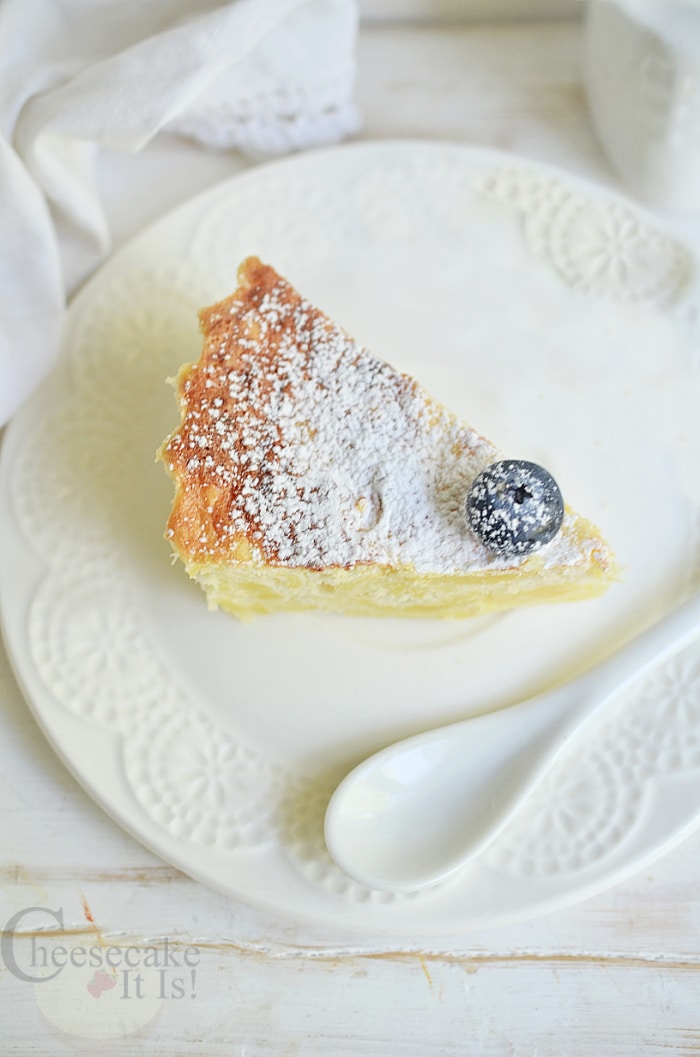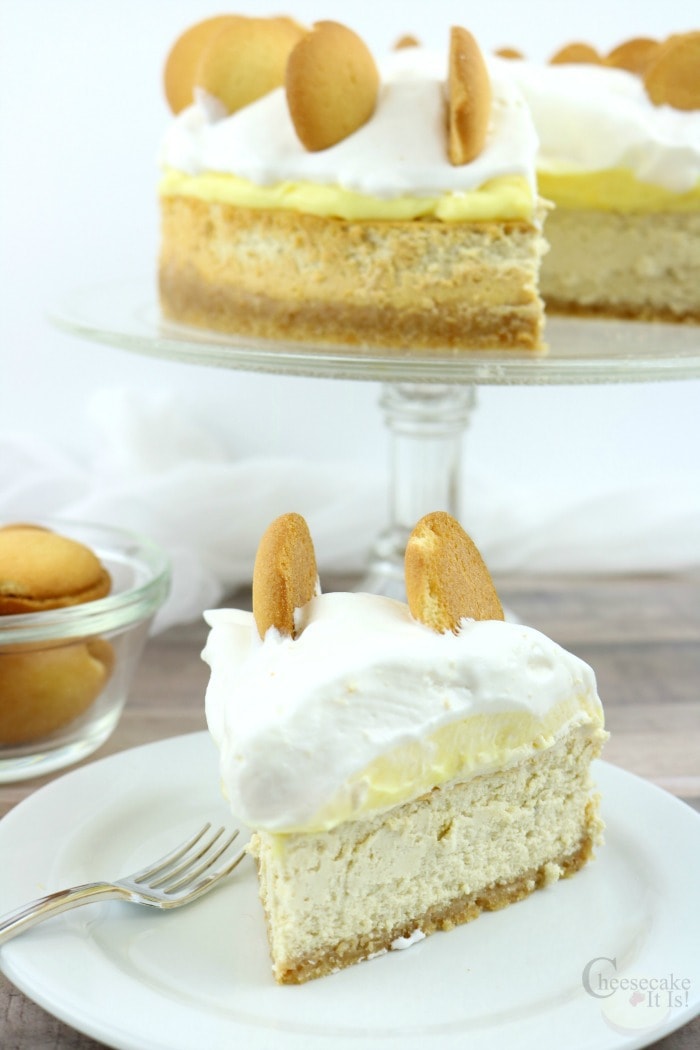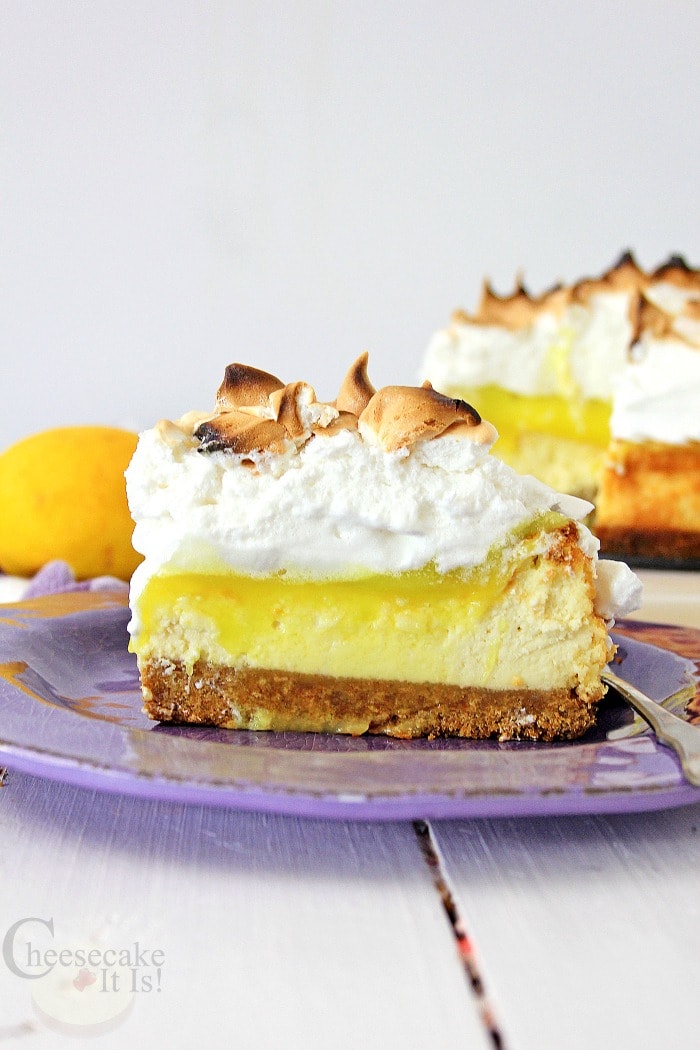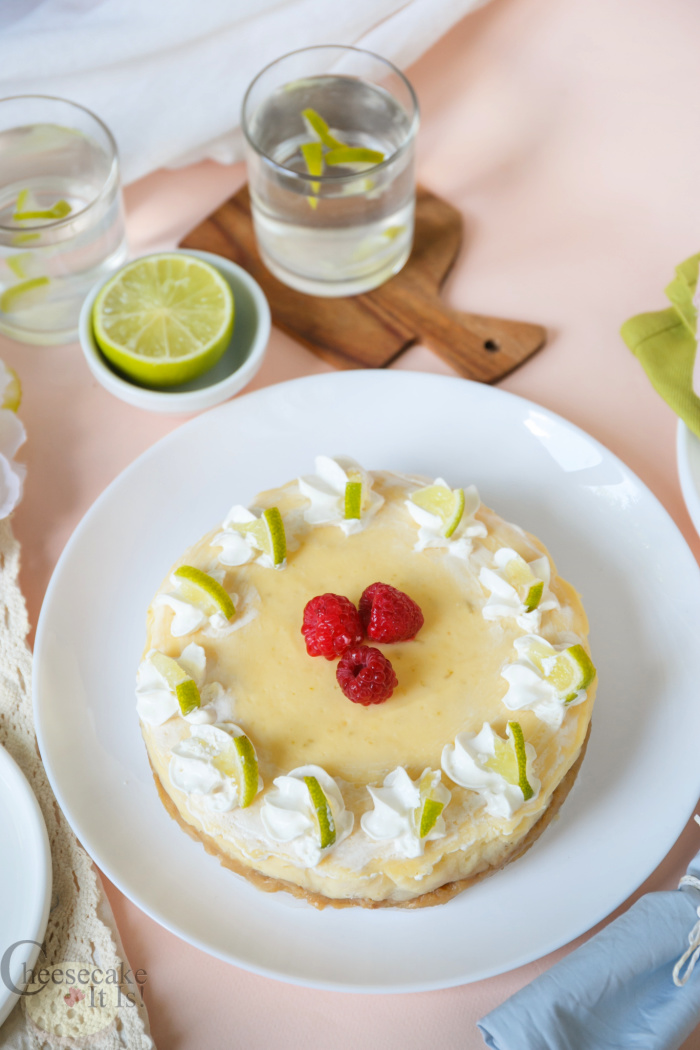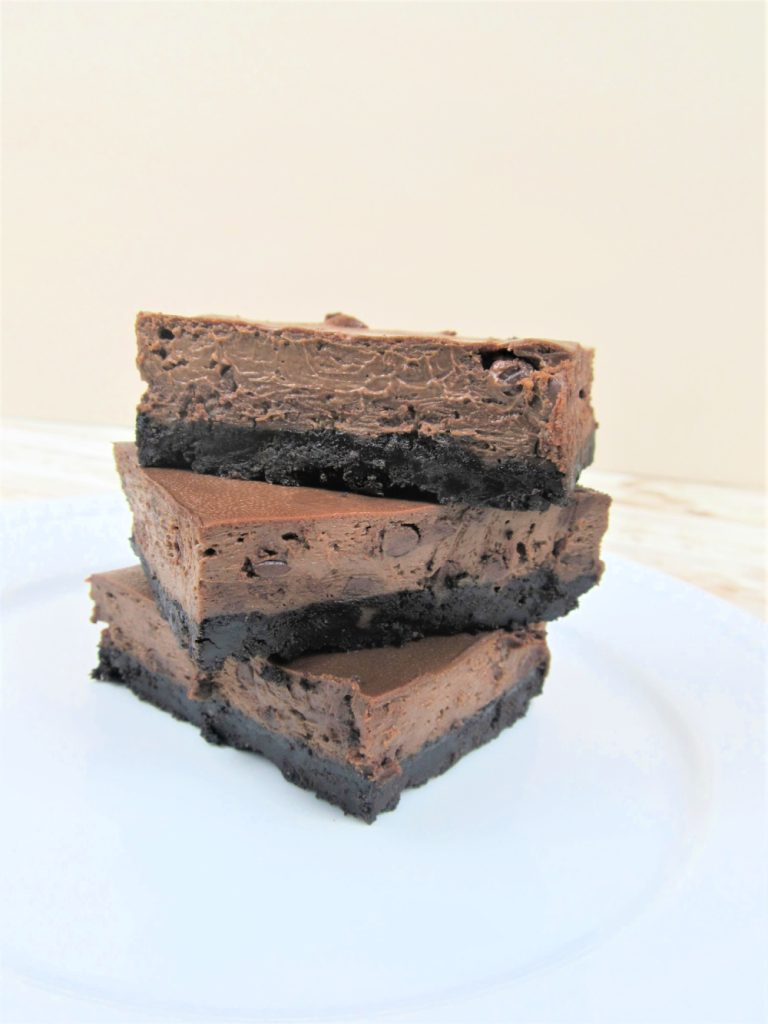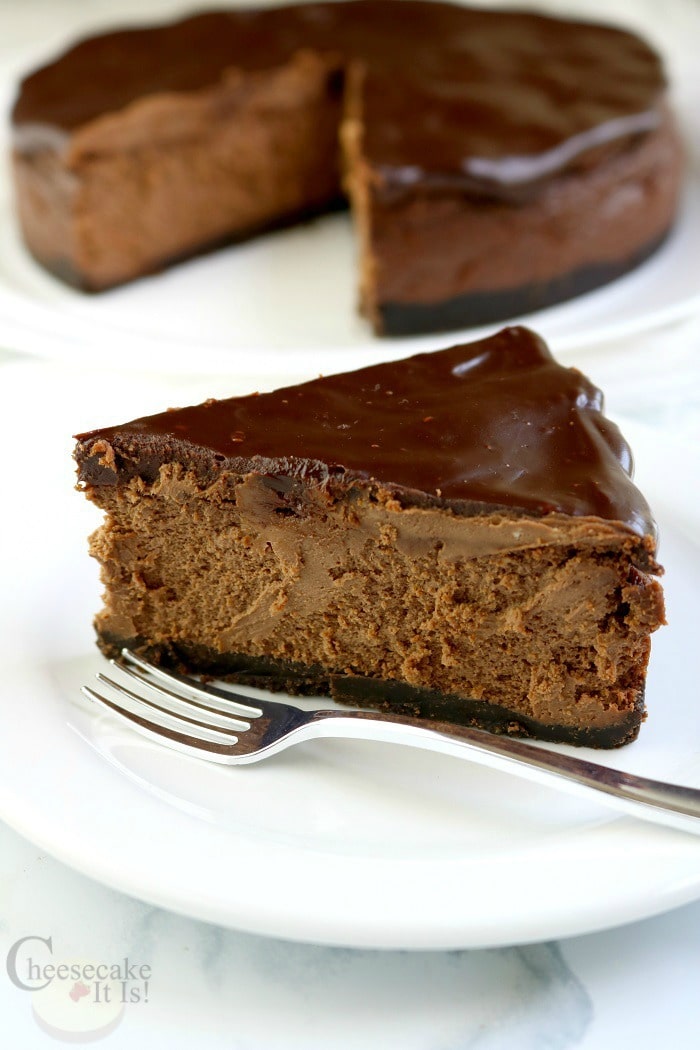Japanese Cheesecake Recipe
This Japanese cheesecake recipe mixes the creamy texture of regular cheesecake with a light and fluffy texture of angel food cake.
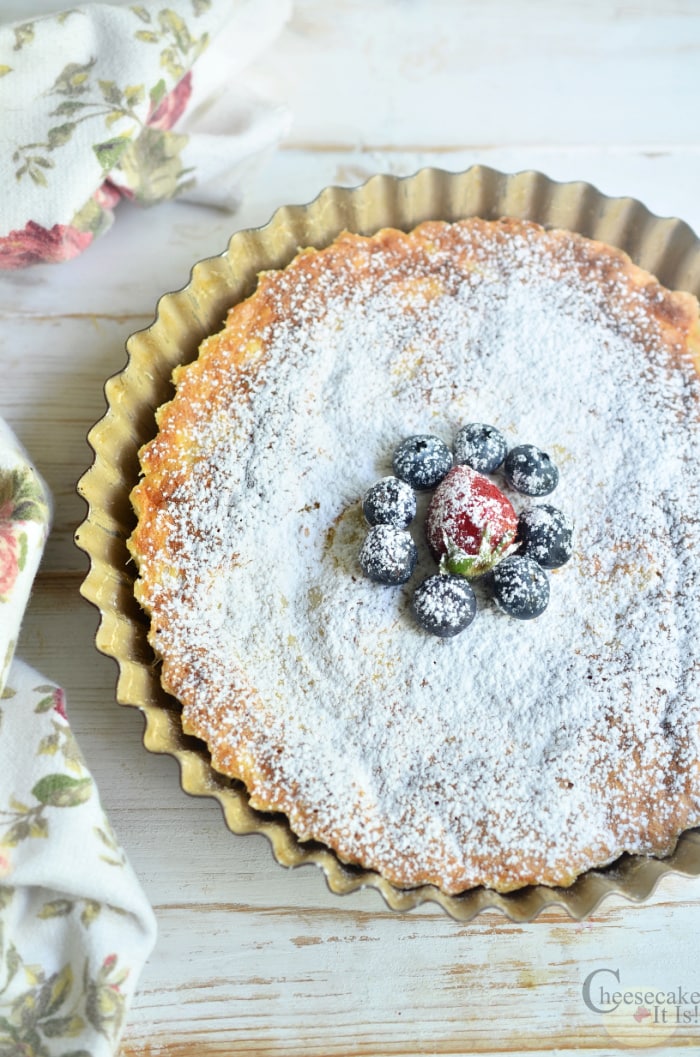
Because Japanese cheesecake is so light and fluffy, it has also been known to be called Japanese cotton cheesecake. It kinda is like a chiffon cake if you have ever had one of those.
This can be made in a springform pan, deep tart pan, or a deep round cake pan.
What Ingredients Will I Need?
To make the best Japanese cheesecake you will need,
- Cream Cheese
- Whole Milk
- Butter
- Sugar
- Salt
- Vanilla
- Corn Starch
- Cream of Tartar
- Eggs
- Lemon Juice
- Flour
How To Make Fluffy Japanese Cheesecake
Preheat the oven to 300 degrees F.
Grease a 9-inch cake pan, cheesecake pan, or deep dish tart pan. Be sure to get the bottom of the pan as well as the sides of the cake pan. If you want things to be even easier you can line with parchment paper.
In a small saucepan over medium heat, heat cream cheese, milk, and butter. Stir until smooth and well blended. Remove from heat and allow to slightly cool.
In a large mixing bowl, whisk together egg yolks, lemon juice, and vanilla. Make sure it is fully blended.
Mix in the cooled cream cheese mixture (which can not be hot or will cook eggs) into the egg yolk mixture. Mix until fully combined.
Now add the cornstarch, salt, and flour to the mix. Mix until fully combined.
In another large bowl beat egg whites and cream of tartar on medium speed until soft peaks form (aka medium peaks). Then slowly add in the sugar and beat on high speed until stiff peaks form. The whisk attachment on the stand mixer works really well for this.
Carefully fold the yolk mixture into the white mixture. You want to do a little at a time and be gentle folding (not stirring) as you want those whites to stay as fluffy as you can keep them.
Carefully add the mixture into the prepared pan.
Baking The Cheesecake:
Place the filled pan into a water bath and put it in the middle of the oven. Bake at 300 degrees F for 30 minutes.
After 30 minutes, reduce the oven temperature to 250 degrees F and bake for another hour and fifteen minutes. When done it should be lightly golden brown on the top of the cake, doubled in size, and still slightly jiggly cake in the middle.
Turn off the oven, remove it from the hot water bath and allow it to cool in the oven with the oven door cracked. After mostly cooled you can remove it from the oven and place it on the counter to cool the rest of the way.
When cool to the touch, remove from the pan and store in the fridge.
Dust with powdered sugar before serving if you like. Happy baking!
Baking Tips & Troubleshooting Issues:
How do you know when Japanese cheesecake is done?
One of the best ways to see if the cheesecake is done is to give it the jiggle test. Give the pan a little bump and watch the center. When done the center should have a slight jiggly cheesecake but should not ripple or be liquidy.
Why does my cheesecake taste eggy?
This can happen for a few reasons. Not beaten egg whites correctly is one. If you under whip it can be a little eggy as the right air is not in the mixture. This can also happen if you over whip as it will beat the air out. There is a very fine line when it comes to whipping egg whites.
The eggy taste can also happen if the cheesecake is undercooked.
Why is my cheesecake wet?
This can be from two different issues. First, if you do not wrap the bottom of your pan before putting it into the water bath, water can leak into the pan making the bottom of the cake wet.
The other reason can be your cheesecake is not all the way cooked. This can happen if you do not follow the right cooking tempters or times. It can also happen if you skip the water bath and just bake the cake in the pan. If you skip the bath the top and edges will get done fast and the center will be undercooked.
Why is my Japanese cheesecake not brown on top?
You may have had the oven too low. Ovens can vary in temperature even though you set the right temperature. So you may want to add an oven thermometer to the oven to be sure.
A cheat way to fix this if you are finished with your baking is to turn on the broiler for just a few minutes to brown the top. Just be REALLY careful as it can burn it fast.
How do you keep Japanese cheesecake from deflating?
It is very important to use the right baking temperature and baking times. When these are off it leads to deflating of the cheesecake.
It is also imperative that the cheesecake slowly cools and not suddenly. That is why it is best to allow it to cool in the oven with the oven off and the door cracked before moving it to the counter to cool the rest of the way.
What happens if you don’t bake cheesecake in a water bath?
While it may be tempting to skip this added step, it really is needed. If you do not use a water bath to bake your cheesecake the edges and top will be done way before the center is done. It can also allow your cheesecake to crack and it can even bake uneven leading to a lopsided cheesecake.
Frequently Asked Questions:
What’s the difference between Japanese cheesecake and regular cheesecake?
Regular american cheesecake is dense and creamy and normally has a crust. Whereas the Japanese version of cheesecake is normally crustless, has less cream cheese, and has whipped egg whites as you would use in an Angel food cake. That gives it more of a light and fluffy texture.
What does Japanese cheesecake taste like?
It is pretty much a mixture of cheesecake and angel food cake. It is light and airy, sweet but not as sweet as a normal cheesecake, and has a vanilla custardy taste.
Is Japanese cheesecake healthier?
It’s not really healthier per se, but it does have less fat and calories than a normal cheesecake.
What is the Japanese cheesecake called?
While most just call it Japanese cheesecake it also has a whole list of other names as well. Also known to be called, soufflé cheesecake or Japanese soufflé cheesecake, and cotton cheesecake.
Why is it called Japanese cheesecake?
This type of cheesecake was created by a Japanese chef called Tomotaro Kuzuno, who was inspired in the 1960s on a trip to Berlin by a local German variant of cheesecake called käsekuchen cheesecake.
The cake was not popularised around the world until the 1990s. It was the signature dish of Uncle Tetsu’s Cheesecake bakery which originated in Japan in 1947.
Do you eat Japanese cheesecake hot or cold?
You can eat it hot or cold. When hot it will be at its fluffiest but will taste a little eggier. I personally like it better at room temperature or even chilled. When cold it brings more of the creamy cheesecake flavor out.
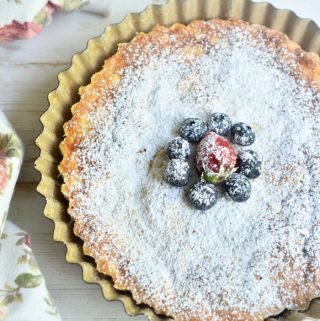
Ingredients
- 10 oz Cream Cheese
- 1/2 Cup Milk
- 4 Tbsp Butter
- 1 Tbsp Vanilla
- 7 Large Eggs
- 1 Tbsp Lemon Juice
- 2/3 Cup Flour
- 1/4 Cup Corn Starch
- 1/4 Tsp Cream Of Tarter
- 1 Cup Sugar
- Pinch Of Salt
Instructions
- Preheat the oven to 300 degrees F.
- Grease 9-inch cake pan springform pan or deep dish tart pan.
- In a small saucepan over medium heat, heat cream cheese, milk, and butter. Stir until smooth and well blended. Remove from heat and allow to slightly cool.
- In a large mixing bowl, whisk together egg yolks, lemon juice, and vanilla. Mix until fully blended.
- Mix in the cooled cream cheese mixture (which can not be hot or will cook eggs) into the egg yolk mixture. Mix until fully combined.
- Now add the cornstarch, salt, and flour to the mix. Mix until fully combined.
- In another large mixing bowl beat egg whites and cream of tartar until soft peaks form. Then slowly add in the sugar and beat on high until stiff peaks form.
- Carefully fold the yolk mixture into the whites mixture. You want to do a little at a time and be gentle folding (not stirring) as you want those whites to stay as fluffy as you can keep them.
- Carefully add the mixture into the prepared pan.
- Place the filled pan into a water bath and put it in the middle of the oven. Bake at 300 degrees F for 30 minutes.
- After 30 minutes, reduce heat to 250 degrees F and bake for another hour and fifteen minutes. When done it should be lightly golden brown, doubled in size, and still slightly jiggly in the middle.
- Turn off the oven, remove it from the hot water bath and allow it to cool in the oven with the door cracked. After mostly cooled you can remove it from the oven and place it on the counter to cool the rest of the way.
- When cool to the touch, remove from the pan and store in the fridge.
- Dust with powdered sugar before serving if you like.
Know that estimated nutrition facts are just a guideline and will vary depending on any variation you make or brand you use from what we have listed.
